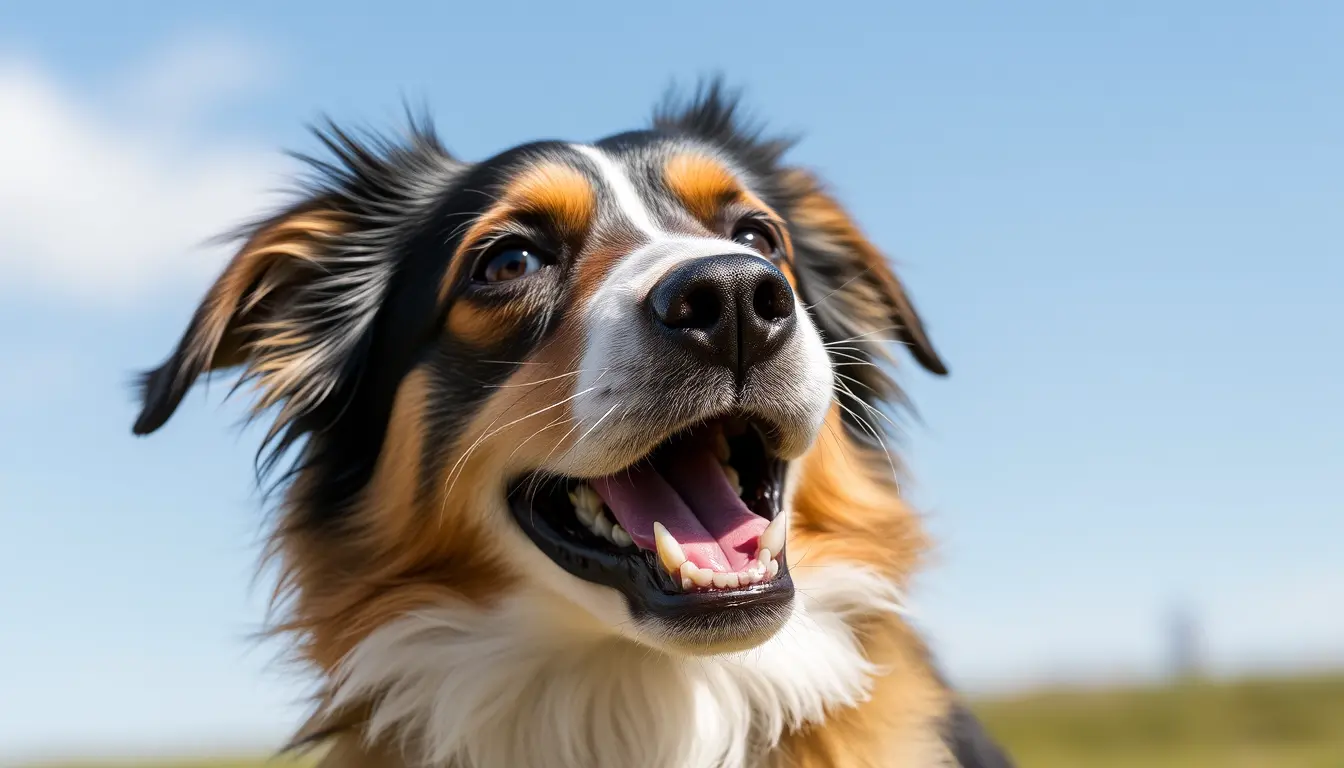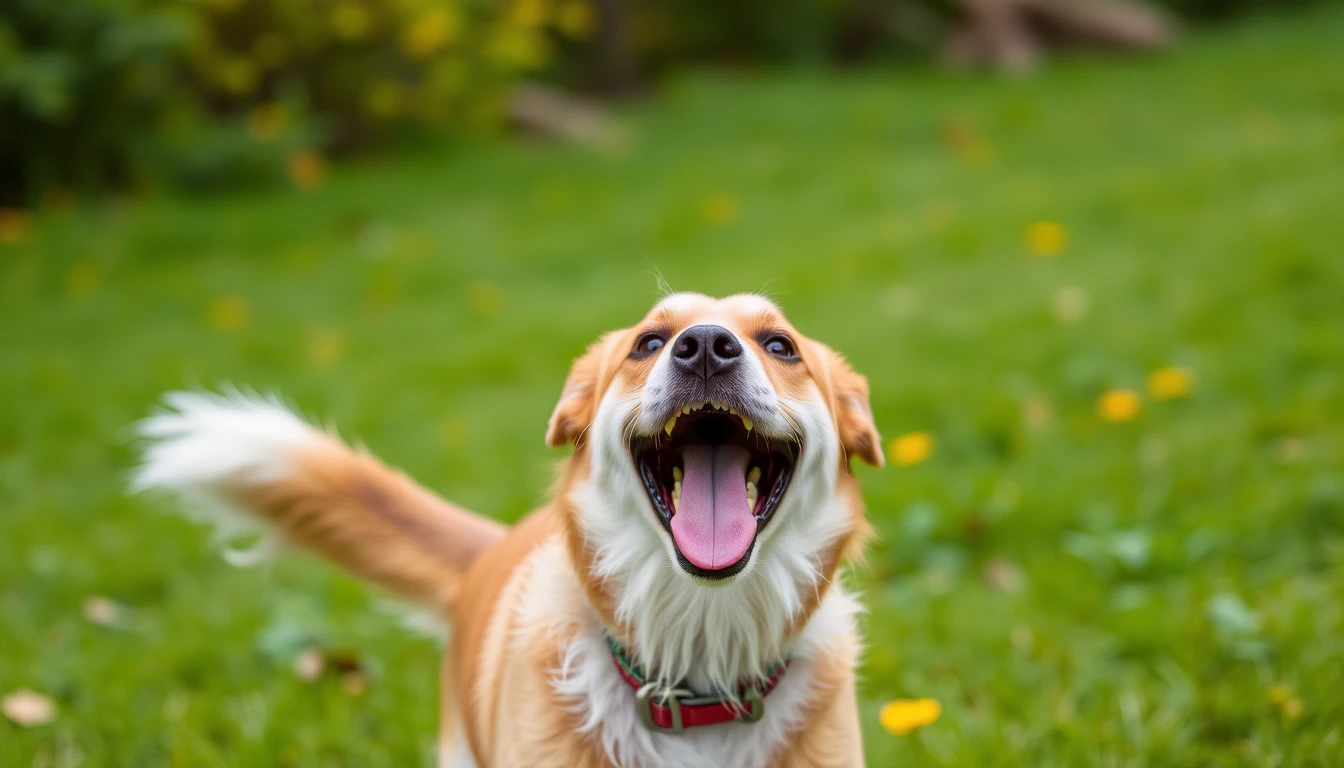Dog Panting a Lot: Causes and When to Worry
Causes and When to Worry

Premium, Sustainable Dog Treats

Founded in 2013 by former fish merchant Steve Moore, Skipper’s Pet Products in Grimsby, UK, is a brand committed to producing high-quality, sustainable dog treats. Skipper’s uses ethically sourced materials from sustainable fisheries, minimizing waste by utilizing fish co-products like fish skin, which is packed with nutrients. Their innovative, low-temperature drying process, powered by recycled energy, ensures the nutritional integrity of each treat. For dog owners seeking healthy, eco-friendly snacks for their pets, Skipper’s provides a trusted and delicious option.
Why Do Dog Panting a Lot?
Dogs pant to cool down. Unlike humans, who sweat to regulate body temperature, dogs have limited sweat glands and rely on panting as a primary means to release heat. When a dog breathes quickly with their mouth open, they evaporate moisture from their tongue and respiratory tract, helping lower their body temperature.
However, some medical conditions can cause excessive panting that’s unrelated to external temperatures or activity. Knowing the context and characteristics of your dog’s panting can reveal a lot about their health.
Common Causes of Dog Panting
- Heat: Dogs typically pant more in warm weather, as panting helps regulate their body temperature. Short-nosed breeds like pugs and bulldogs are especially prone to panting because they have narrower airways, making it harder for them to breathe effectively in hot weather.
- Physical Activity: This is normal after playtime or a long walk, and they should gradually return to a regular breathing pattern as they rest.
- Excitement or Stress: Dogs also pant when they’re excited or anxious. If your dog pants when meeting new people, during car rides, or when visiting the vet, this is likely a reaction to excitement or stress. Calming techniques, like gentle petting or providing a quiet environment, can help them feel more at ease.
- Pain or Discomfort: Panting can be a sign of pain, especially if accompanied by other symptoms like restlessness, whining, or avoiding physical contact. Pain-related panting could stem from an injury, joint problems, or an internal condition. If you notice unexplained panting along with other unusual behavior, it’s worth consulting your vet.
- Health Conditions:
- Heart Disease: Heart conditions can cause panting as the dog’s body struggles to circulate oxygen efficiently.
- Respiratory Issues: Respiratory infections, lung problems, or bronchitis can lead to heavy breathing or panting.
- Cushing’s Disease: This condition, caused by an overproduction of cortisol, often results in increased panting, thirst, and hunger.
- Obesity: Overweight dogs may pant more frequently, even with minimal exertion, as extra weight puts additional strain on their cardiovascular and respiratory systems.
- Side Effects of Medication: Some medications, like steroids, can cause increased thirst, hunger, and panting in dogs. If your dog is on medication and you notice changes in their panting pattern, speak with your vet to discuss possible side effects.
When to Worry About Dog Panting
- Excessive or Prolonged Panting: If your dog continues to pant heavily for long periods without an obvious reason, it could signal an underlying health issue.
- Panting Paired with Other Symptoms: Watch for additional signs such as coughing, lethargy, vomiting, or a reluctance to move, which may indicate a more serious condition.
- Panting in Cooler Temperatures: If your dog pants heavily even when the weather is cool and they haven’t been active, this could be a sign of an internal problem like heart disease or respiratory issues.
- Sudden Panting Episodes: A sudden increase in panting without any known trigger might indicate an acute issue, such as an allergic reaction, poisoning, or injury.
Tips for Monitoring and Managing Dog Panting
- Create a Comfortable Environment: Ensure your dog has access to water and a shaded area, especially during hot weather.
- Maintain a Healthy Weight: Keeping your dog at a healthy weight can reduce the strain on their respiratory and cardiovascular systems.
- Stay Alert to Changes in Behavior: Watch for changes in panting patterns and other signs that could point to discomfort or illness.
- Schedule Regular Vet Checkups: Routine checkups help detect early signs of health conditions that could affect your dog’s breathing.
Helping Your Dog Stay Calm
- Provide a Quiet Space: A familiar, quiet environment can help your dog feel more secure.
- Engage in Calming Activities: Use toys, gentle petting, or background music to relax your dog.
- Consider Calming Supplements: For dogs with significant anxiety, calming supplements, such as those containing chamomile or valerian root, may be helpful under vet guidance.




